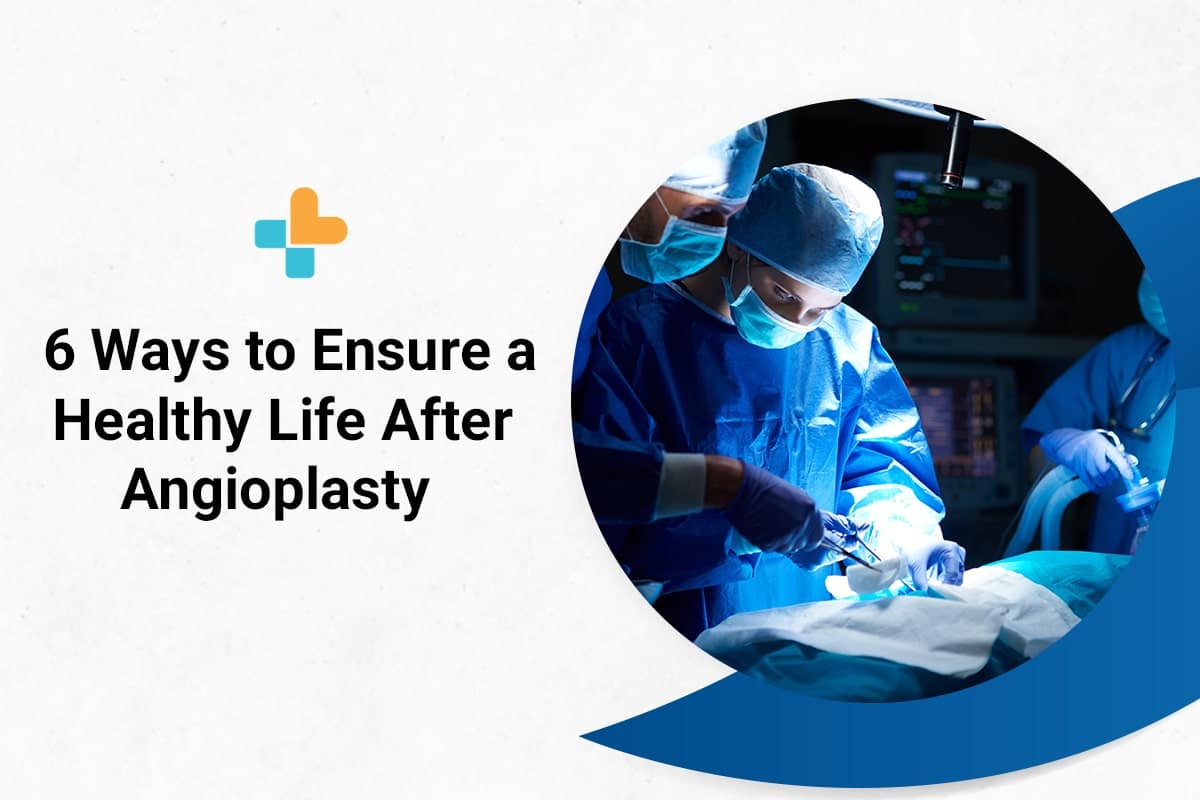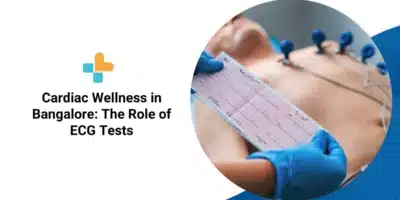The human body is truly a marvel, capable of withstanding a great deal of pain. But as we grow older, the body’s capacity to deal with years of wear and tear gradually declines. There are a number of ailments that you might have to deal with, some of which require non-invasive procedures as well as invasive surgeries, say an angioplasty stent placement.
That is precisely what we will discuss in this blog – life after angioplasty stent placement, the recovery, and how one’s life gets affected by it after the treatment.
But first, let us go over what exactly is angioplasty stent placement.
What is Angioplasty Stent Placement?
Angioplasty is a minimally invasive procedure where the cardiologist clears blockages from the arteries that supply blood to the heart. This allows blood to flow freely to the heart muscles, ensuring they receive sufficient oxygen. The majority of patients who undergo angioplasty treatment also need a stent implant. A stent is a tiny, latticed metal scaffold inserted using a balloon catheter into the patient’s artery. Most advanced stents include a medication coating on them to improve long-term clinical outcomes.
The operator inserts the catheter into the blocked artery and inflates the balloon, which is used to crimp the stent. The stent begins to extend towards the vessel wall when the balloon is inflated. The balloon is then deflated and removed, leaving the stent in place, and enhancing blood flow by keeping the blood vessel open.
Side-Effects After Emergency Stent Placement
In the case of patients who have undergone an emergency stent placement after a heart attack, the recovery time and precautions taken post-surgery are quite different. As previously said, such patients would require more time to resume their typical activities. Patients should seek emergency medical assistance if they suffer any of the following problems or adverse effects:
- Inflammation, bleeding, discomfort, or pain at the catheter insertion site
- Redness, discharge, swelling, or fever, all of which are signs of infection
- Discoloration of the arms or legs, depending on where the procedure was done
- Chest discomfort, weakness, and faintness
- Shortness of breath and temperature fluctuations
Life After Angioplasty Stent Placement
The good part is that researchers from Duke Clinical Research Institute have found that life expectancy after a stent implant does not change, However, the rehabilitation period following treatment can be lengthy, and the body might take its time regaining its strength. It’s critical that patients continue to progress with each passing day and take some extra, important steps. After an angioplasty stent placement, the following lifestyle adaptations are recommended:
- Take Proper Medications
Patients who are inconsistent with prescriptions over time are quite common, as it may seem unnecessary. There is a common misconception that once the treatment is completed properly, the medicine can be stopped. Medications (at least blood thinners and cholesterol-lowering statins) are required following stent implantation, despite common opinion, since they prevent a serious life-threatening condition known as stent thrombosis.
- Follow Healthy Diet
Following a healthy diet after stent placement is another important lifestyle modification to make. Patients are frequently recommended to avoid diets heavy in salt, cholesterol, trans-fats, saturated fats, and other unhealthy ingredients.

Foods suggested to be included in the diet:
- Green fruits and vegetables
- Whole foods
- Salmon
- Low-fat dairy
- Fiber rich foods
- Dry fruits, and other foods high in iron and vital vitamins.
Ultimately, patients must eat nutritionally balanced foods, as recommended by a dietician or other healthcare practitioner participating in the treatment.
- Manage Your Stress Levels
Any type of stress is bad for the heart. Increased stress levels can worsen cardiac issues, raise blood pressure, and damage arteries which can lead to angioplasty. As a result, once the procedure is completed, patients must take action to lower their stress levels. Relaxation practices such as yoga and meditation, as well as activities that can lower overall stress and help preserve heart health.
- Regular, Steady Exercising
After a stent is implanted, there is no real requirement for patients to stay in bed for too long. Patients should begin moderate activity as soon as possible following angioplasty, such as walking on flat ground and progressively increasing the intensity of exercise. Within one month of a stenting treatment, one should anticipate being back to pre-disease exercise levels. For roughly 4-6 weeks, heavy exercise such as lifting weights or walking up steep slopes should be avoided.
- Cut Out Drinking, Smoking
Habits such as smoking and drinking alcohol must not have a place in your life after angioplasty stent placement. Smoking damages the arterial walls and causes fat accumulation. As a result, the artery constricts, obstructing blood flow throughout the body. Smoking causes both active and passive smokers (those who are in close physical contact with active smokers) to develop more serious cardiac diseases.
Meanwhile, excessive alcohol intake can cause a number of health problems, ranging from high blood pressure to strokes, irregular heartbeats, and cardiomyopathy (heart muscle disease). Drinking too much alcohol may lead to health concerns including obesity, lethargy, and strokes, all of which can lead to cardiac difficulties.
- Regular Follow-Ups
After an angioplasty stent placement, follow-up visits are recommended to optimize therapy, test for side effects or complications, and manage risk factors. Depending on the circumstances and the patient’s risk profile, the frequency of follow-ups may vary. They are usually done once a month and must be followed exactly as prescribed by the treating cardiologist.
Frequently Asked Questions
- Can you live a normal life after a heart stent?
Yes, with proper care, treatment, and time, one can live a relatively normal life after inserting a heart stent.
- Does having a stent shorten your life?
Researchers from the Duke Clinical Research Institute have found that stents have no impact on mortality over the long term.
- What to avoid after having a stent?
After inserting a stent, it is important for the patient to avoid drinking alcohol, smoking, and eating unhealthy food.
- How many years does a stent last?
A stent often lasts a lifetime. But only in 2-3% of cases the narrowing of the aortic valve returns, that too in the first 6-9 months.
- How is life after angioplasty?
It’s vital to realize that a coronary stent can help you live a full and active life. The following are some general tips for returning to work, resuming daily activities, and implementing heart-healthy lifestyle adjustments.
In conclusion, post-procedure compliance with advice and suggestions is the key to healthy long-term results, and even the slightest neglect can prove fatal. Recover from an angioplasty stent placement in no time under the best possible care atAyu Health. For any queries or consults, book an appointment by visiting the Ayu Health website or call us at 08069489584.
Our Hospital Locations
Cardiology Surgery Hospitals in Chandigarh | Cardiology Surgery Hospitals in Bangalore | Cardiology Surgery Hospitals in Jaipur | Cardiology Surgery Hospitals in NCR | Cardiology Surgery Hospitals in Hyderabad
Our Doctors
Cardiology Surgery Doctors in Chandigarh | Cardiology Surgery Doctors in Bangalore | Cardiology Surgery Doctors in Jaipur | Cardiology Surgery Doctors in NCR | Cardiology Surgery Doctors in Hyderabad
About the Author

Dr. Darshan Krishnappa
Dr. Darshan Krishnappa is a renowned cardiologist currently practicing at Ayu Health, Bangalore.
Dr. Darshan Krishnappa is a Cardiologist with 7 years of experience. He completed his MD in Internal Medicine from the prestigious All India Institute of Medical Sciences, New Delhi. He is specialized in cardiology.




